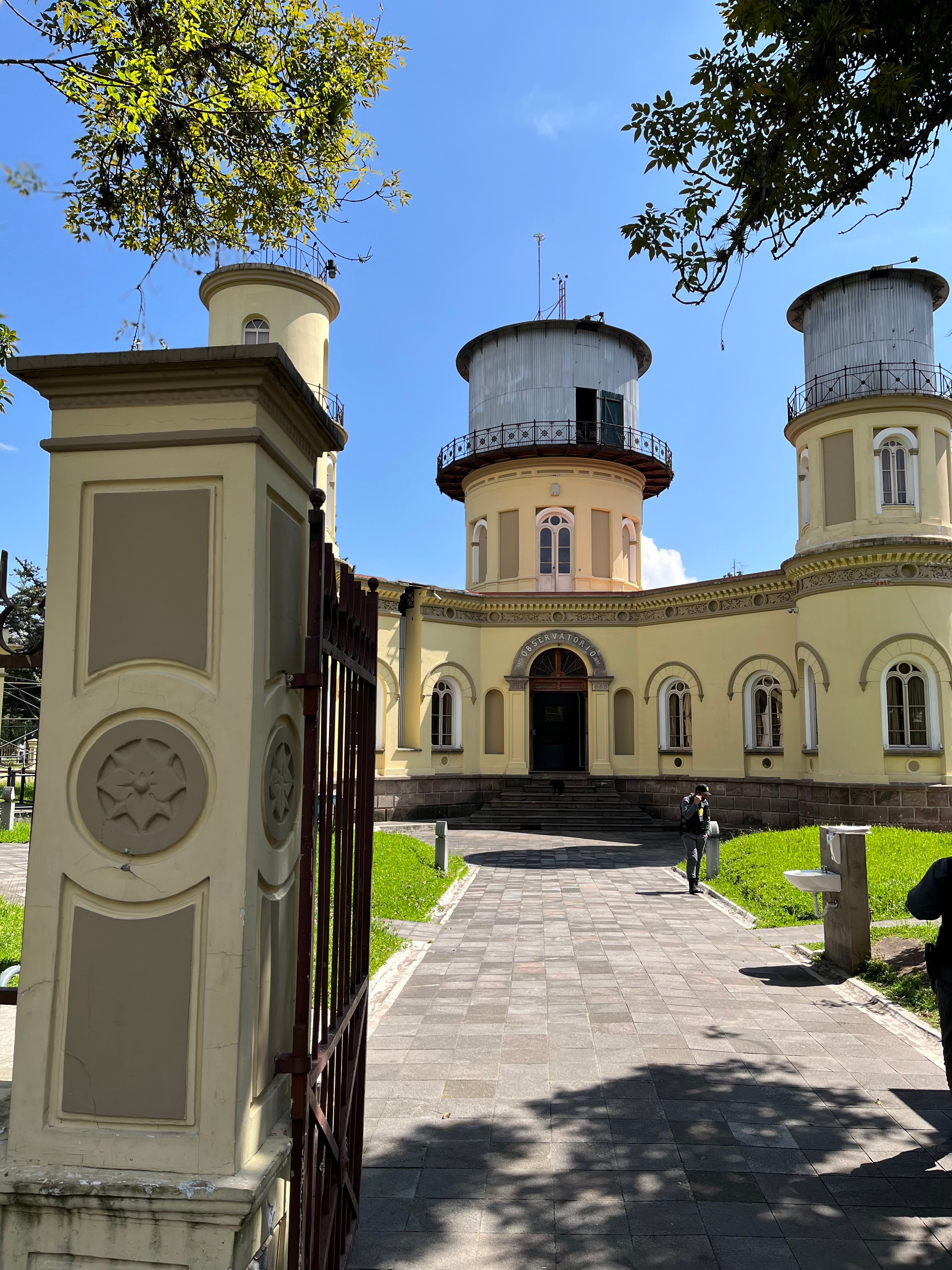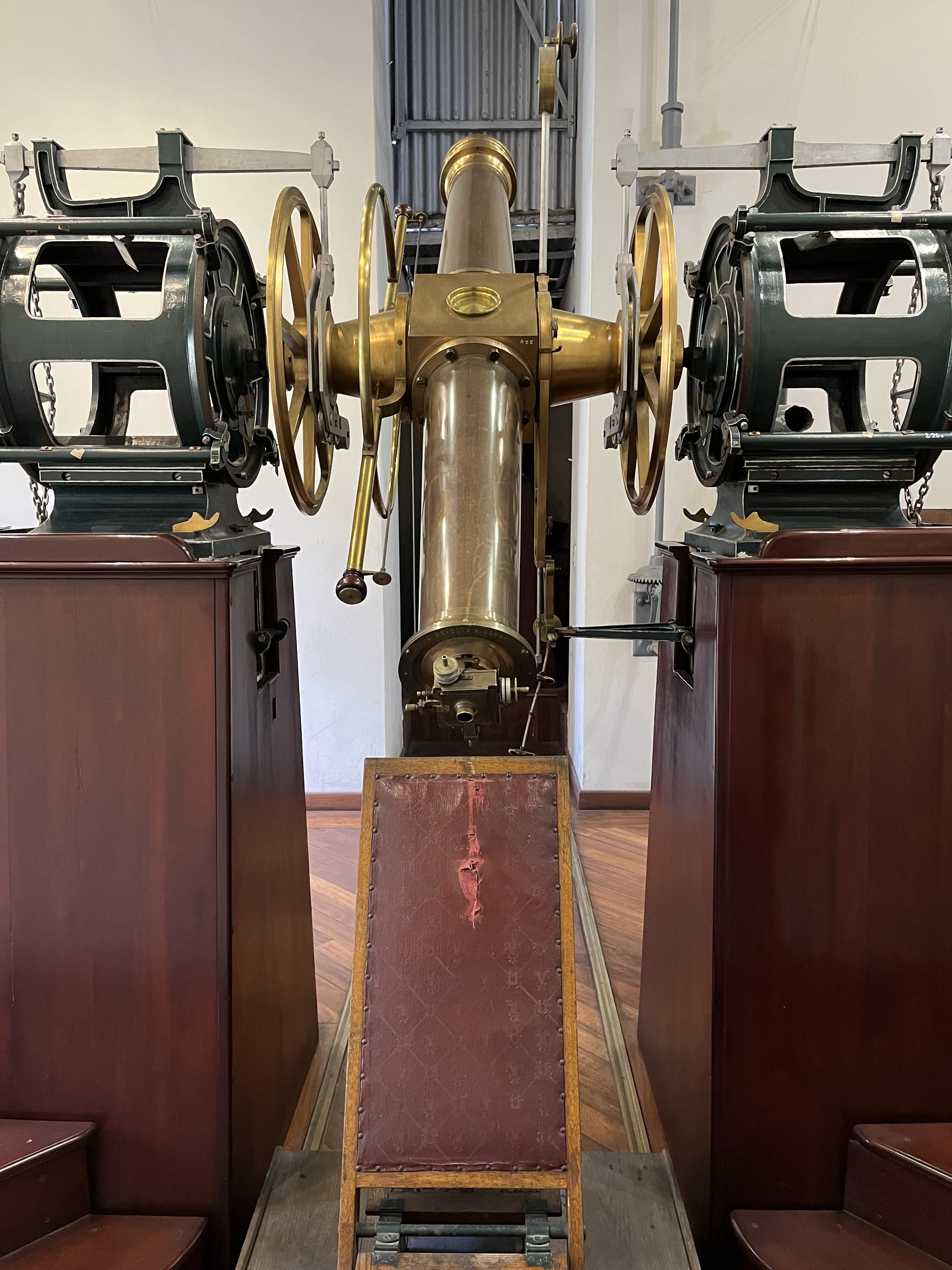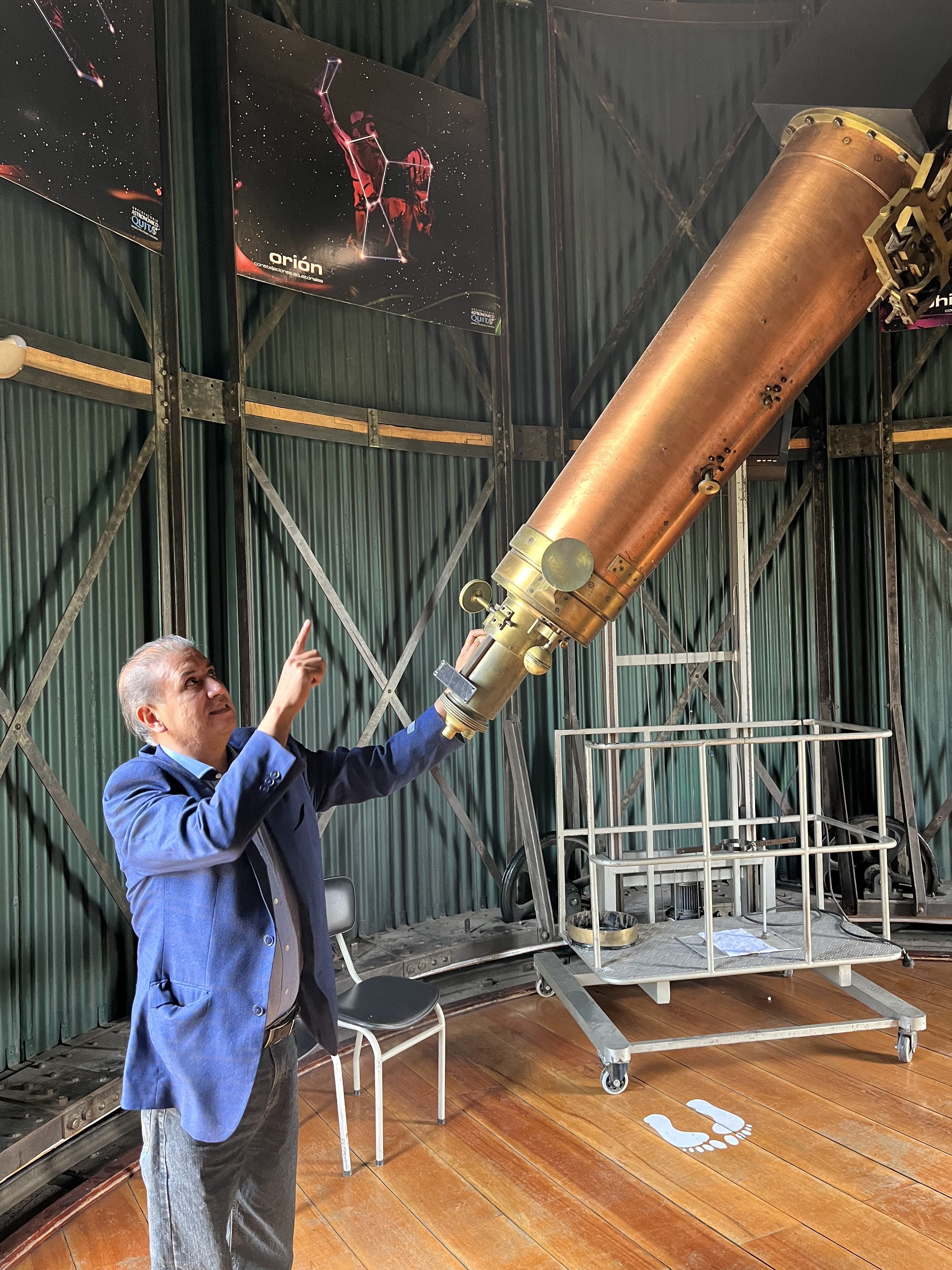
Quito, the capital city of Ecuador, is perched on the mountainous backbone of the Andes, which run through the center of this equatorial nation on the northwest shoulder of South America. Although February is the wet season, but it isn’t raining today so people lounge near a pond in Parque Alameda, with fountains spraying jets of water past a luxuriant palm.
My destination is at the heart of the park: the Observatorio Astronómico de Quito (OAQ). When I reach the ornate, butter-yellow Victorian structure, I feel as if I’ve stepped back in time. It’s laid out as a Greek cross, with five turreted towers. Although the building is now a museum, it is still the center of Ecuador’s only astronomical research institution, the Escuela Polytécnica Nacional (EPN).
In my faltering Spanish, I explain to the guards that I am there to meet the director. Their faces brighten and one escorts me to the office of Dr. Ericson Lopez. He has just returned from teaching a class at EPN. Students huddle over computer screens in the anteroom as Lopez brings me into his office. It retains an antique feel, despite the modern computers outside.
Establishing an observatory

The observatory was founded in 1873 at the directive of Ecuadorian president Gabriel García Moreno, who personally laid the first stone. He brought a group of Jesuit scholars from Germany to establish the EPN and named Father Juan Bautista Menten as the first director of the observatory. Menten used Germany’s Bonn Observatory as a basis for the design and construction of the OAQ and obtained a 9.4-inch refracting telescope from Georg Merz & Sons of Munich.
Historically, the observatory’s main work was astrometry, the precise determination of the position and movement of celestial objects. Ecuador’s location on the equator offers the ability to study both the Northern and Southern hemispheres, making it an ideal location for such work. However, with Quito’s modern-day light pollution, the research emphasis has shifted to computational astrophysics rather than observing.
When Lopez took the helm as director in 1996, he was the only professional astronomer in Ecuador. Today, he proudly tells me, the number is 30 and growing. Training new scientists is a priority and students have used data from such sources as the Hubble Space Telescope and the Chandra X-ray Observatory. The resident instruments, no longer active in research, are part of the magnificent astronomy museum.
In the museum, Lopez shows me a plaque presented in 1743 by the First French Geodetic Mission, whose purpose was to establish Earth’s true shape. The museum also contains instruments from the Second French Geodetic Mission, which arrived in 1901. They include a beautiful transit telescope, still positioned in front of its observing slit. From a later era is a functioning atomic clock. But the highlight is the beautiful copper and brass Merz refractor. At first glance, the horizontal mount looks like it’s alt-azimuth. But of course, it’s equatorial — the pole star is simply on the horizon here. The telescope is popular on public observing nights and Lopez still takes delight in the exclamation of wonder when a visitor sees a planet for the first time.
The OAQ is also active outside the Quito campus. In 2007, the International Heliophysical Year, Kyushu University in Japan initiated the Magnetic Data Acquisition System (MAGDAS). It is a worldwide study of solar effects on Earth’s magnetosphere. In 2012, the OAQ installed a magnetometer in the Jerusalem forest preserve northeast of the city as part of MAGDAS, where it makes measurements of Earth’s magnetic field.
Astronomy on the equator

But to Lopez, this is just a beginning. He dreams of a new observatory high in the Andes, at a site some 22 miles (35 kilometers) north of Quito with a latitude of 0° 0′ 8.67″ South. “Having an observatory exactly on the equator would allow for correlation of sky surveys between the Northern and Southern hemispheres,” he says as he shows me a conceptual design of the facility. Funding to construct it is not yet available, but he remains hopeful.
The equator is not quite like anyplace else. The next day I visited Mitad del Mundo, the Middle of the World. There is an impressive monument at the spot believed to be the location of the equator circa 1980, but more recent measurements with GPS show that it’s nearly 790 feet (240 meters) off. The monument isn’t going anywhere, but a smaller park lies on the true equator. It has a big red line painted along the equator itself, just like on a desktop globe. I was a few weeks too early for the Day Without a Shadow: At the equinox, the Sun is directly over the equator at noon and for several minutes shadows lie directly underfoot, while buildings and other vertical objects appear to cast no shadow at all.
Astronomy in Ecuador goes back much earlier than the 19th century. This was once part of the Incan empire, and many Ecuadorians still celebrate the Incan solstice festival of Inti Raymi. A few days after leaving Quito, I was exploring El Cajas National Park. This is a rugged region of glacier-carved valleys and lakes, where wild orchids grow on Polylepsis “paper trees” and the endangered South American Condor can still be seen.
My guide brought me to a ledge overlooking a valley and showed me a round hole cut into a rock. Why would somebody come to this remote spot just to gouge a hole in a rock? Nobody is sure, he said, but it is thought to be an Incan solstice marker. To determine exactly when the solstice occurred, the Incas constructed markers that would only be illuminated at that time. But was this a solstice marker? It was facing east — maybe at dawn on the solstice, that dark hole becomes a circle of light. I asked whether anyone had ever come here on the solstice to see what happens. My guide did not know. Maybe that’s a project for a future trip.









